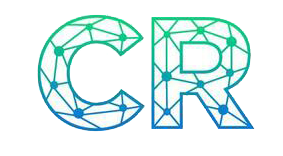- THORChain paused BTC & ETH withdrawals, citing insolvency risks
- Amid restructuring and debt concerns, RUNE’s price dropped by 37% in just 7 days
THORChain, a cross-chain swap protocol, has paused withdrawals for its Bitcoin (BTC) and Ethereum (ETH) lending and savings services under its THORFi platform. The decision follows growing concerns about the platform’s financial health, with allegations of insolvency and mounting debt raising red flags within the crypto community.
This suspension is part of a 90-day restructuring initiative aimed at stabilizing the protocol, addressing debt, and preventing a potential liquidity crisis. For now, other services such as trading and swaps remain operational during this period.
Lending and savings services temporarily paused
THORChain’s decision to halt its THORFi services stems from concerns about the sustainability of its lending and savings programs. Over time, these programs reportedly accumulated unmanageable levels of debt, raising fears of insolvency.
Validator nodes implemented the 90-day freeze to mitigate risks and protect the protocol from a “rush to the exit” scenario. This measure aims to ensure that the platform remains operational, while addressing financial uncertainties.
Haseeb Qureshi, Managing Partner at Dragonfly, described the situation as akin to a “bankruptcy freeze,” highlighting the severity of the liquidity challenges.
Concerns also revolve around a potential shortfall in Bitcoin reserves within the lending pools. As a result, there are growing doubts about THORChain’s ability to fulfill obligations if large-scale redemptions occur.
Challenges with THORFi and RUNE’s role
The ongoing issues trace back to BTC loans issued when the prices were much lower than its current levels. To address the resulting debt, THORChain minted additional RUNE, its native token, raising concerns about market stability. Without an active liquidation mechanism, fears have mounted over potential large-scale redemptions. This could devalue RUNE and weaken THORChain’s financial foundation.
Synthetic assets, including derivatives of BTC and ETH backed by RUNE-collateralized liquidity pools, are also facing scrutiny. These assets depend heavily on the token’s value, creating further risks if market fluctuations persist.
As expected, all this has fueled a host of reactions from many across the community.
.@THORChain is insolvent
In the event of any large debt redemption and/or savers & synths deleveraging, it is certain that TC cannot meet its bitcoin and eth denominated obligations.
Validators decided to pause the network while they vote a restructuring plan
🔽🧵
— TCB (@1984_is_today) January 24, 2025
Restructuring and future steps
Despite these challenges, however, THORChain’s leadership remains optimistic about recovery. Founder John-Paul Thorbjornsen asserted,
“The protocol makes a ton of money and can service the debt — once restructured.”
Community validators are working to evaluate proposals that could improve THORChain’s economic framework. Meanwhile, the pause on lending and savings services seeks to buy time for these changes to be implemented effectively.
RUNE’s price and market performance
RUNE, the native token of THORChain, has seen sharp price declines amid the financial uncertainty. In fact, trading at a price of $2.40 at press time, RUNE dropped by 20.30% in the last 24 hours and 37.78% over the past week.
Crypto analysts have also noted that RUNE’s price may be nearing its 2022-2023 consolidation zone.
While this decline has frustrated some investors, others view it as a potential opportunity to accumulate the token. They may be anticipating a rebound once restructuring efforts are completed.







